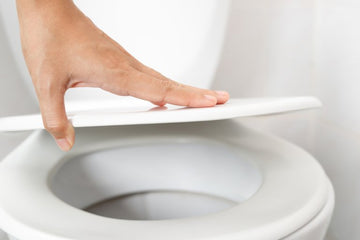In the realm of property management, especially for rental properties, owners and managers are continuously seeking ways to enhance property value while reducing operational costs. One of the increasingly popular and effective methods for achieving these objectives is the installation of water-saving toilets. These efficient fixtures not only contribute to significant cost savings but also align with the growing demand for environmentally friendly and sustainable living solutions.

Why Consider Water-saving Toilets?
The concept of water conservation is no longer just a trend; it's a necessity. With the global water crisis becoming more pronounced, it's imperative for property owners to make conscious decisions that help conserve water. Installing water-saving toilets in rental properties is a proactive step towards supporting this cause. These toilets reduce water usage by utilizing advanced flushing mechanisms that require less water per flush compared to traditional toilets.
For instance, while a conventional toilet may use up to 6 gallons per flush (GPF), a water-saving toilet may use as little as 1.28 GPF, as noted in the best water-saving toilets guide. This drastic reduction in water usage translates to lower water bills and a smaller environmental footprint.
Benefits for Landlords and Tenants
Financial Savings
One of the most compelling reasons for installing water-saving toilets in rental properties is the potential for substantial financial savings. With rising water costs, landlords can significantly reduce expenses by lowering the overall water consumption of their properties. This, in turn, can enhance the profitability of their investments.
Moreover, these savings can be passed on to tenants in the form of lower utility bills, making the property more attractive to potential renters. This is especially appealing in competitive rental markets where every advantage counts.
Increased Property Value
Installing eco-friendly fixtures like water-saving toilets can add value to a rental property. Prospective tenants today are more environmentally conscious and often prefer living spaces that are designed with sustainability in mind. According to a water-saving toilets guide, properties equipped with sustainable features tend to attract a higher quality of tenants who are willing to pay a premium for green living solutions.
Environmental Impact
The installation of water-saving toilets not only benefits the property owner financially but also contributes positively to the environment. By reducing the amount of water used per flush, these toilets help conserve water resources, which is crucial in areas prone to drought and water shortages. This aligns with broader efforts to combat climate change and promote sustainable living practices.
Compliance with Regulations
In many regions, there are stringent regulations regarding water usage and conservation. By installing water-efficient toilets, rental property owners can ensure compliance with local water conservation laws, avoiding potential fines and penalties. Additionally, compliance with such regulations can improve the property's reputation and appeal to environmentally conscious renters.
How to Choose the Right Water-saving Toilet
When selecting a water-saving toilet for a rental property, it's important to consider several factors to ensure the best fit for the property and its tenants. Key considerations include the toilet's flushing technology, size, and design. Dual-flush toilets, for example, offer tenants the flexibility to choose between a full or partial flush, further optimizing water use.
For a detailed comparison, consider reading about dual-flush vs single-flush toilets to make an informed decision.
Installation and Maintenance
Installing a water-saving toilet is a relatively straightforward process, but it may require professional plumbing services to ensure proper installation and functionality. Regular maintenance is also essential to ensure the toilet operates efficiently over time. This includes checking for leaks, which can negate the water-saving benefits.
For more information on preventing leaks, refer to the article on preventing leaks.
Conclusion
Incorporating water-saving toilets into rental properties is a strategic decision that can lead to significant financial benefits, increased property value, and a positive environmental impact. As water conservation becomes increasingly critical, property owners who adopt these solutions will not only enhance their properties but also contribute to a more sustainable future.

FAQs
What types of water-saving toilets are available?
There are several types of water-saving toilets, including dual-flush and low-flow toilets. Each type offers different water-saving capabilities and features.
What is the average cost of installing a water-saving toilet?
The cost can vary depending on the model and installation requirements, but generally, it ranges from $200 to $500, including installation.
Can water-saving toilets really make a difference in water bills?
Yes, by significantly reducing water usage per flush, these toilets can lead to noticeable savings on water bills.
For more water conservation tips, visit water conservation tips.






